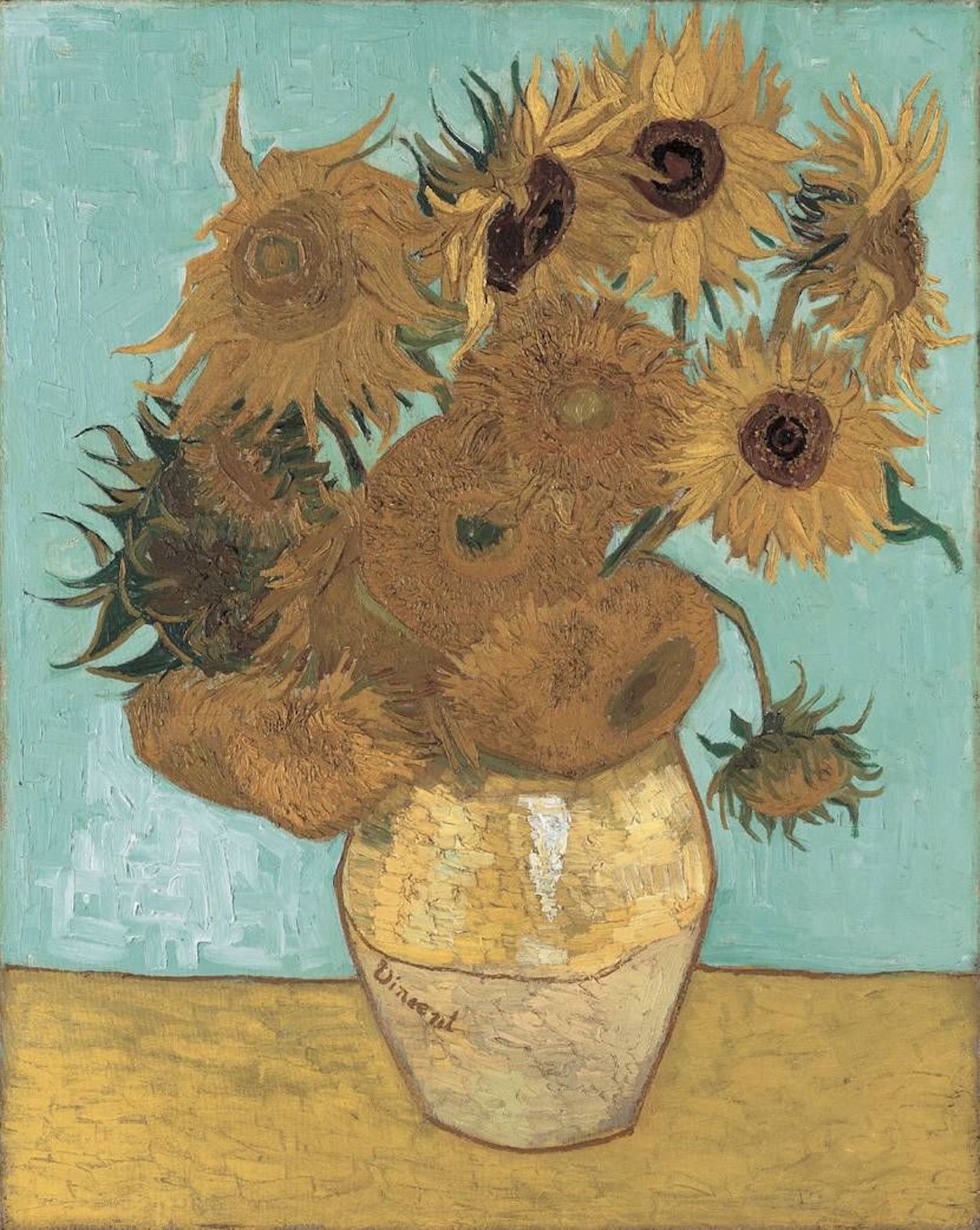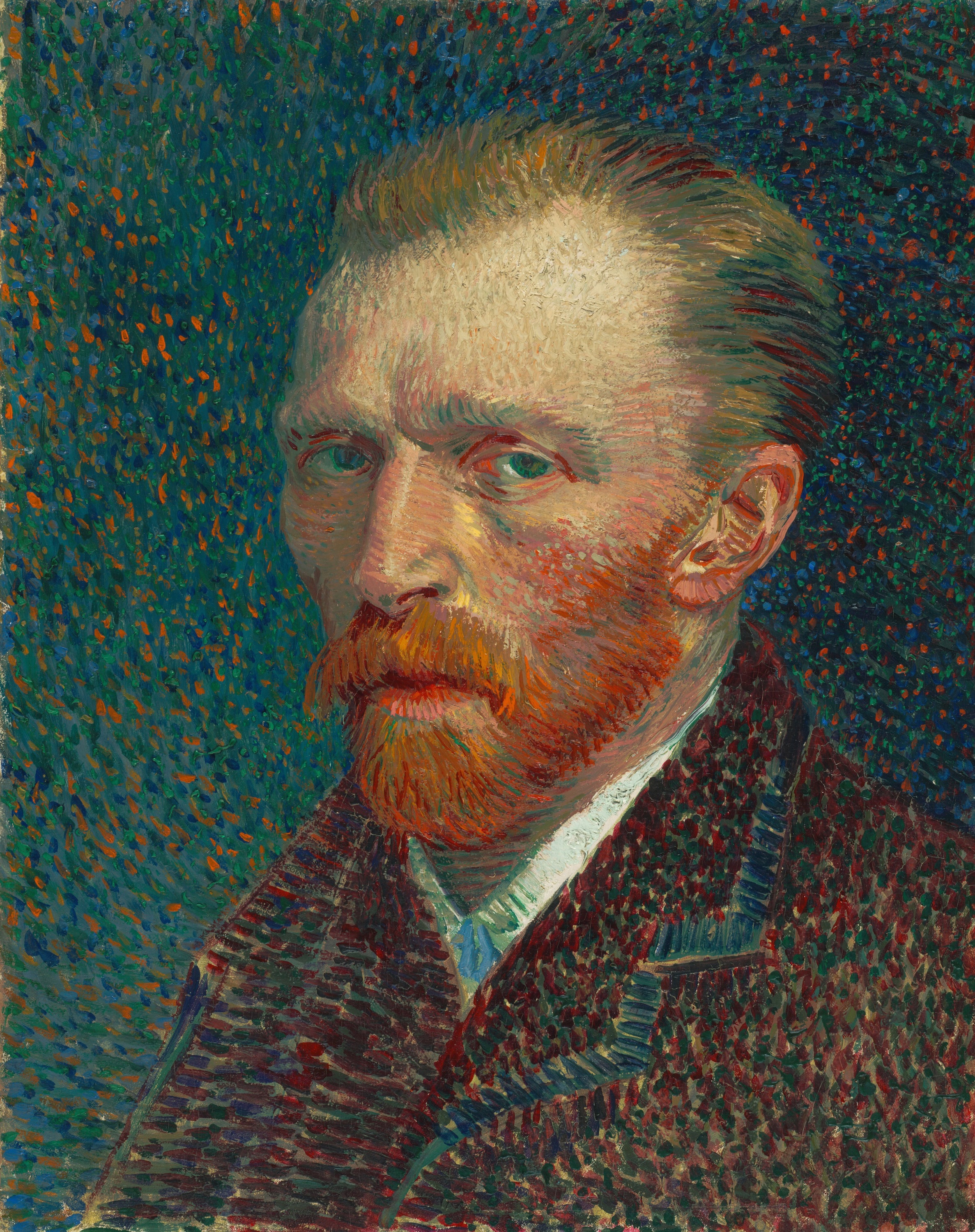Van Gogh created a series of sunflower paintings in 1888. They were supposed to be decorations for the Yellow House in Arles in which Van Gogh’s houseguest, Paul Gaugin, would be staying. Unfortunately, due to his fighting with Gauguin, after which he sliced off his own earlobe in a paranoid panic, Van Gogh was never able to fulfill his plan. Instead, he sent the paintings to an exhibition, imagining the two sunflower paintings one either side of another of his paintings entitled La Berceuse, and calling it the Berceuse Triptych. The paintings were exhibited at the Les XX exhibit in Paris and he displayed all three paintings together again at the aforementioned exhibit in 1890.
Sunflowers were traditionally associated with worship and constant devotion. To Van Gogh, their vibrant colors represented the vitalizing power of the sun. The artist himself, in a letter to Emile Bernard, compared the colors of his painting to the effect of stained-glass windows. The thickly worked paint, which sculpts the flower petals and creates a basket-weave pattern on the table's surface, together with the curve of the vase, heightens the color effects.


 Vincent van Gogh
Vincent van Gogh